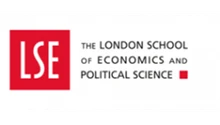To succeed, the industrial strategy needs to build strong local ecosystems in places where the eight priority sectors can thrive. The example of Greater Manchester shows why investment must be joined-up and focused on making the city-region a more productive place to do business across the board.
An industrial strategy cannot be everything to everyone. At its core, it is a plan that the government uses to focus support on the development of specific industries in the economy. But its success depends on ensuring that the chosen sectors thrive in the right places. The UK economy needs places like Greater Manchester to grow. And places like Manchester need support to grow by becoming more productive, better connected and more attractive to businesses and workers.
The UK’s latest industrial strategy identifies eight priority sectors – advanced manufacturing, creative industries, life sciences, clean energy, defence, digital and technologies, professional and business services, and financial services – that offer the highest potential for national growth (Department for Business and Trade, 2025). It aims to be ‘unashamedly place-based’ by recognising that regional growth is critical to national growth, and signals that government support will be concentrated in areas where clusters already exist or could emerge.
The industrial strategy in practice
The strategy recognises Greater Manchester as a key city-region. It promises to move more civil service jobs to Manchester, to improve intra-city connectivity and to relocate the Industrial Strategy Council’s headquarters to the city by 2026.
This reflects Manchester’s growing economic role. Between 2002 and 2019, it grew faster than any other major UK city outside London, at an average of 2% per year (Brandily et al, 2023). To a large extent, the growth of its services sector has helped the city to avoid stagnation and a tight labour market. For example, employment in the city rose by 3% in 2023 (Ernst & Young LLP, 2024).
There is still a long way to go. Manchester is 35% less productive than London. In comparison, the gap between Paris and Lyon is 20%. If London and Manchester continue to grow at their historic pace, it will take 90 years for the productivity gap to shrink by just 15 percentage points, enough to match the gap between Paris and Lyon (Brandily et al, 2023).
But Greater Manchester has the potential to accelerate this catch-up. It is a devolved combined authority with a governance model that is built on decades of cross-authority collaboration (Bates et al, 2023). The proposed deeper devolution (Ministry of Housing, Communities and Local Government, 2024) provides it with the tools needed to translate national ambitions into local delivery.
How can the strategy empower city-regions?
Whether the new industrial strategy supports that goal depends on how well its different parts fit together. There is a concern that while the strategy uses place-based language, it remains sector-first in its orientation (Swinney, 2025). In practice, this risks making place an afterthought rather than an organising principle.
But understanding how firms operate shows why place must be central. The sectors identified in the strategy benefit significantly from agglomeration. They rely on dense labour markets, shared inputs such as infrastructure and supply chains, and opportunities for collaborative learning and innovation (Brandily et al, 2022). These advantages are more easily realised in cities where firms locate near one another and benefit from economies of scale (Combes and Gobillon, 2015).
But many major cities are home to clusters that cut across multiple sectors. Around 10% of firms operate across at least two of the strategy’s eight sectors (Wang and Swinney, 2025). The notion that sectors are distinct and separate is not reflected in how firms behave on the ground, which implies that interventions to support one sector are likely to spill over to others due to co-location and shared inputs.
If sectoral planning happens in silos, it risks missing these interdependencies. Further, if local economic strategies are too narrowly focused on a handful of sectors, they may miss the bigger opportunity: making the city-region a more productive place to do business across the board.
For example, the BBC’s relocation from London to Salford triggered a substantial increase in creative industry activity in Greater Manchester. In the first five years after the move, every three BBC jobs led to one other job in Salford’s creative industries (Nathan et al, 2024). By 2017, this had risen to one additional job for every two BBC jobs.
But the impact beyond the creative sector was minimal. Adjacent industries such as technology and professional services saw little change, and overall employment in Salford did not rise significantly.
Fixing the foundations of the city economy
Greater Manchester has been relatively successful in shifting employment to tradable services sectors such as finance and other knowledge-intensive services. But despite this transition, corresponding improvements in productivity have not materialised.
The problem is not sectoral composition. If Manchester were to retain its current mix of industries but firms achieve London-level productivity within those sectors, the productivity gap between the two cities would close by 74% (Brandily et al, 2023). This underlines the fact that the real challenge lies not in which sectors are present in a place, but in how well they perform. This, in turn, depends on the functioning of the wider city economy.
Bridging the productivity gap with London will require an increase in both capital and skills. Reducing the productivity gap to 20% requires increasing business capital in Manchester by 15% and the graduate workforce by 180,000 (Brandily et al, 2023).
Rather than concentrating narrowly on specific sectors, the focus should be on attracting and retaining high-value firms and highly skilled workers. This is especially important in an economy that is working on growing and improving its capabilities in tradable services. Firms in places like Manchester are diverse, but they tend to rely on similar foundations: centrally located office space, high-quality information technology infrastructure and access to a deep pool of skilled labour.
Manchester will need to make difficult decisions about land use, as well as scaling up investment in intra-city transport and addressing housing affordability, if it wants to unlock higher productivity. These investments, while not sector-specific, are critical to making the region attractive to firms in any of the priority sectors.
The Productivity Institute advocates an approach that strengthens seven forms of capital: physical, human, intangible, financial, institutional, social and natural (Sensier et al, 2024). In Rochdale, for example, their research finds that the benefits of new developments like Atom Valley may be limited unless matched by improvements in connectivity, housing and skills in surrounding areas.
To enable this transformation, cities need joined-up investment. This goes beyond headline announcements or one-off projects. It requires coordinated action across transport, housing, skills, digital infrastructure and public services. This means devolving not just responsibility to cities but also control over the tools to get the job done.
Making the industrial strategy work at a local level
The UK’s industrial strategy has made the right diagnosis. It seeks to raise productivity, support high-value sectors and spread economic opportunity beyond London. But success depends on delivery – and that means building strategies that work for places as complex and interconnected as Greater Manchester.
Manchester has made progress, with a devolved governance model, a growing tradable services sector and improving infrastructure. But sustaining this progress will be harder. It will take long-term commitment and coordination across government, business and local institutions, and a willingness to back places with the investment and tools that they need to succeed.
If the country wants its industrial strategy to succeed, it must start by making places like Greater Manchester work better – not just for a few sectors, but for the whole economy.
Where can I find out more?
- The UK’s Modern Industrial Strategy: the Department for Business and Trade White Paper published in June 2025.
- English Devolution White Paper: the Ministry of Housing, Communities and Local Government White Paper published in December 2024.
- A tale of two cities (part 2): A plausible strategy for productivity growth in Greater Manchester and beyond: part of the Economy 2020 Inquiry by the Resolution Foundation and the Centre for Economic Performance (CEP), September 2023.
- Multipliers from a major public sector relocation: The BBC moves to Salford: CEP research paper.
- Framing a place-based investment strategy for Rochdale: report from the Productivity Institute, November 2024.
- The new Industrial Strategy: How does it measure up?: assessment by Paul Swinney at the Centre for Cities.
- Eight sectors, one story: The geography of the Industrial Strategy: assessment by Yunze Wang and Paul Swinney at the Centre for Cities.
Who are experts on this question?
- Mike Emmerich
- Max Nathan
- Henry Overman
- Marianne Sensier
- Paul Swinney









































